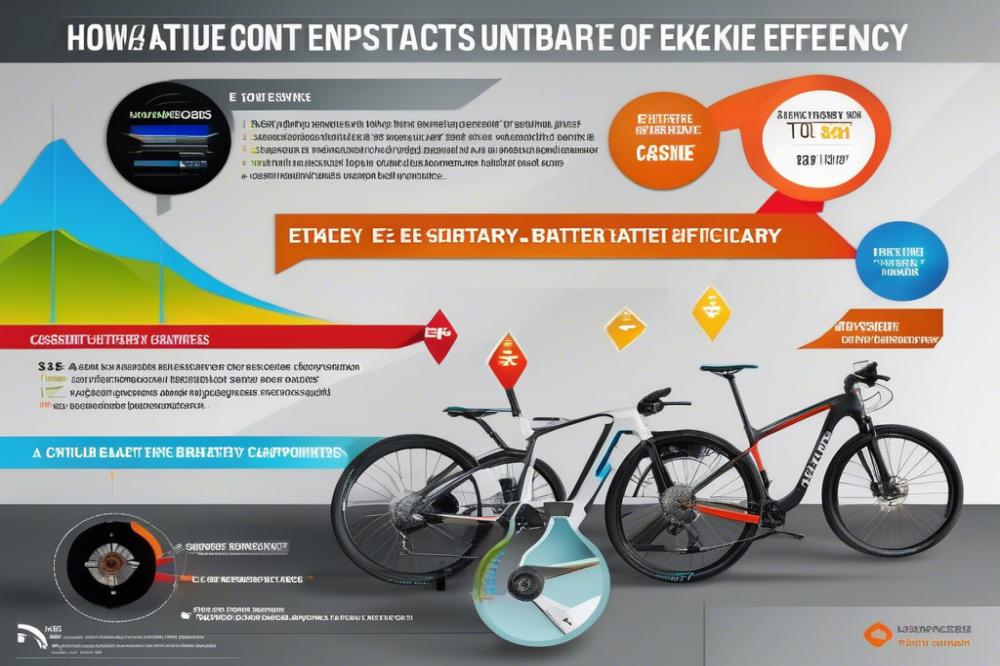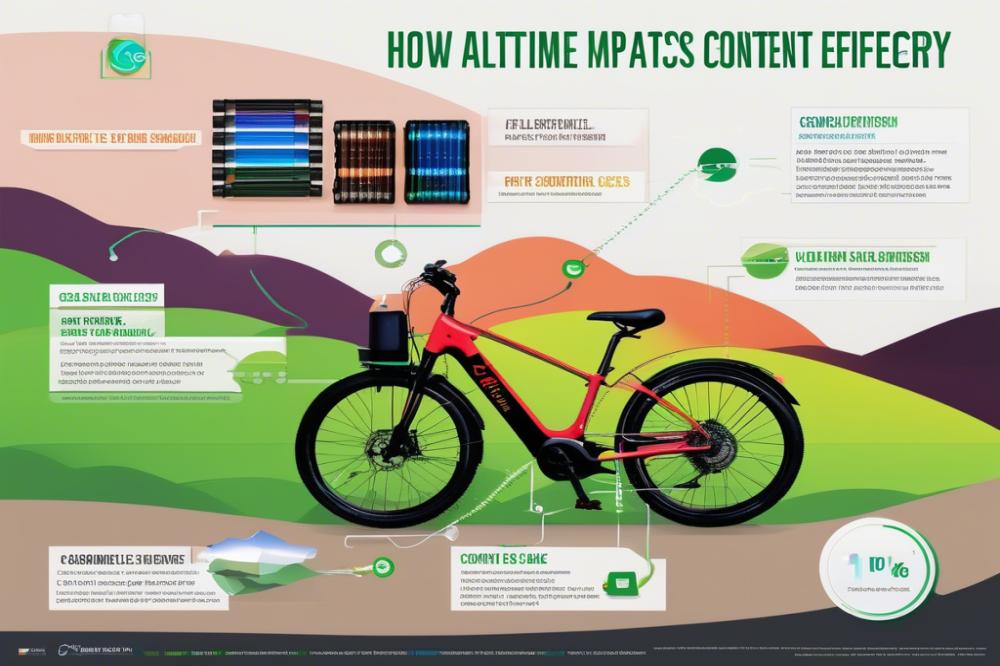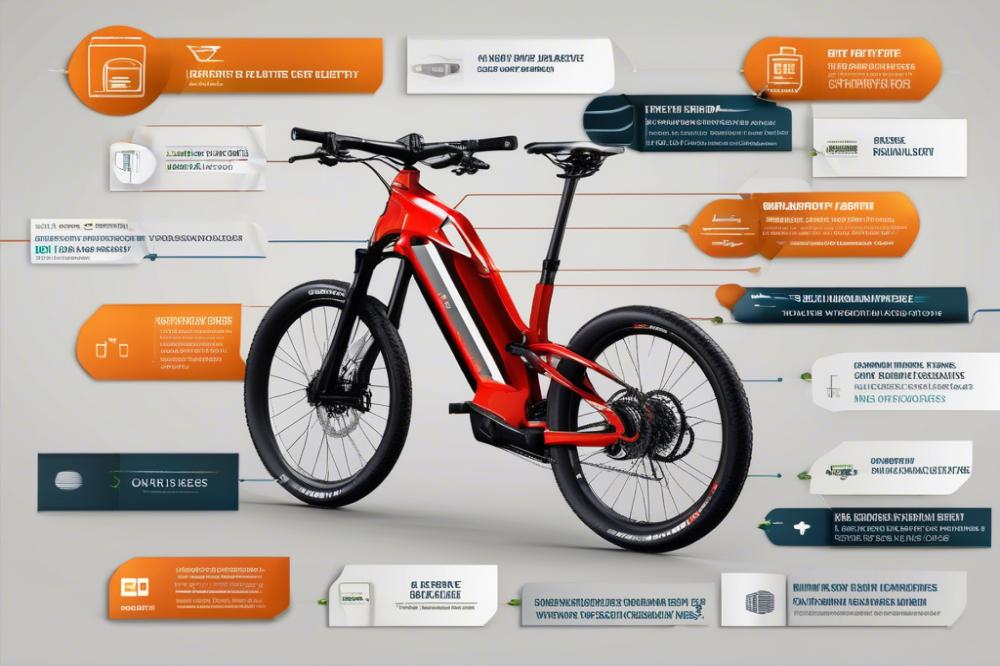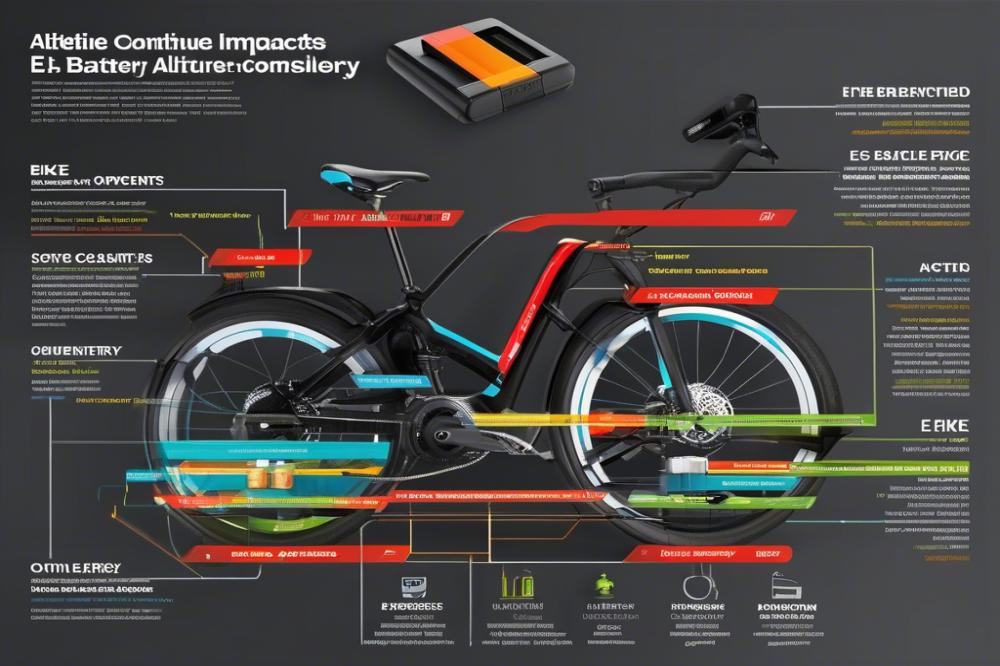How altitude impacts E-bike battery efficiency
Electric bikes, or e-bikes, have transformed the way we commute and explore our surroundings. At the heart of this exciting technology lies the battery, which powers the entire ride. Understanding battery technology is crucial for riders who want the best performance out of their e-bikes. With insights into how energy consumption works, cyclists can maximize their rides.
Battery efficiency matters most when considering how far one can travel on a charge. Riders often look at distance, speed, and climbing efficiency. However, they also need to recognize that external factors significantly influence performance. One of these factors is altitude, and its effects cannot be overlooked.
High elevations can lead to unique challenges for e-bike battery life. As riders ascend, lower air pressure and temperature variations come into play. These elements impact how well a battery functions and holds its charge. Understanding these altitude effects can greatly assist in planning routes and managing expectations.
When cycling at high altitudes, battery performance and electric bike range may diminish. Maintaining optimal speed while climbing can result in increased energy consumption. In these situations, an awareness of altitude impacts could help a rider adjust to their surroundings and enhance their overall experience. Thus, exploring how elevation changes interact with e-bike technology is essential. It ultimately empowers riders to enjoy their journeys while getting the most out of their E-bike battery efficiency.
E-bike Battery Efficiency


Battery efficiency in e-bikes refers to how well the battery converts energy into usable power for your ride. Each ride depends heavily on how the battery performs under various circumstances. It makes a difference when it comes to distance and speed.
Many factors influence battery performance. For instance, the weight of the rider, type of e-bike technology, and terrain all play a role. Furthermore, speed can also affect energy consumption. Riders tackling steep hills find their batteries depleting faster due to climbing efficiency. Temperature variations can make things more complicated too.
The Role of Altitude in Electric Bike Range
Altitude impacts electric bike range significantly. Higher altitudes mean thinner air. This leads to a decline in battery life since engines have to work harder. As you go up, the power needed to navigate inclines increases. A good charge may not take you as far when traversing mountainous areas.
More challenging terrains often use more energy. Riders may find themselves adjusting their riding styles to conserve power. It is also important to note environmental factors. Wind resistance at high altitudes can further diminish battery efficiency. When planning a ride, understand how these elements interact.
The Impact of Altitude on Battery Performance


How altitude affects air density and oxygen levels
Altitude can greatly influence the performance of an e-bike’s battery. As you climb higher, air density decreases. This reduction affects the amount of oxygen available. Electric bikes rely on efficient motors for performance, and lower oxygen can challenge these systems. Riders often notice less power when pedaling uphill in thin air. Understanding this can help plan your rides better. Riders should be ready for these changes when exploring high-altitude areas.
Effects of reduced oxygen on electric bike performance
Oxygen levels drop significantly at higher elevations. With less oxygen, motors must work harder. This impacts the overall battery performance of your electric bike. Climbing efficiency suffers when air is thin. Users may experience a gradual decrease in speed on steep hills. Lower power output can lead to a frustrating ride. Riders need to adjust their expectations and riding style in such conditions.
Energy consumption at higher altitudes
Higher altitudes also influence energy consumption. As e-bike technology advances, it becomes essential to understand these dynamics. Riders may find that they consume more energy when tackling steep climbs in thin air. Temperature variations can further complicate battery life. Cold weather combined with low oxygen levels can shorten your electric bike range. Being aware of these environmental factors can prepare riders for the challenges ahead. Planning ahead ensures a smoother ride in tougher conditions.
Climbing Efficiency and Altitude


Understanding Climbing Efficiency and Its Significance
Climbing efficiency is essential for e-bike riders. It refers to how effectively an electric bike handles uphill challenges. Riders often encounter steep hills and tough trails. When you pedal uphill, the bike consumes energy from the battery. More energy used means less electric bike range. This efficiency directly affects how long you can ride before needing a recharge.
E-bike technology has advanced, improving climbing capabilities. With better designs, riders can tackle higher inclines without draining the battery quickly. Understanding this helps cyclists plan their rides effectively. If you know your limits, you can avoid running out of power unexpectedly.
Impact of Altitude on Climbing Performance
Altitude plays a critical role in climbing performance. As you ascend, the air becomes thinner and affects both battery life and physical stamina. Higher elevations can cause the motor to work harder. This increased effort leads to greater energy consumption.
Temperature variations also come into play. At high altitude, both cold air and less oxygen impact battery performance. In colder regions, batteries may struggle to maintain efficiency. Because of these factors, riders may find climbs tougher and battery life shorter.
Comparison of Battery Life During Climbs at Varying Altitudes
When comparing climbs at different altitudes, the differences become clear. A low-altitude climb usually allows for better battery performance. Riders can go further without needing to recharge. As altitude increases, that distance can greatly reduce.
Testing shows that climbing at high altitude often drains batteries quicker than expected. Riders might find themselves running low on power sooner than planned. The higher the peak, the greater the challenge. Environmental factors like wind and rocky terrain can also add additional strain on both the rider and the battery.
Overall, altitude impacts climbing efficiency in significant ways. It is important to consider these factors when planning any climb. By understanding battery life during different ascents, e-bike enthusiasts can better navigate their journeys. Proper preparation can help avoid surprises on the trail.
Temperature Variations and High altitude effects


How Temperature Affects Battery Efficiency
Battery performance can greatly fluctuate with temperature changes. As you rise to high altitudes, temperatures often drop. The lower temperatures may hinder the chemical reactions inside the battery. This slowing reaction can lead to decreased electric bike range and power output. Keeping a watchful eye on temperature variations is crucial. Riders may find themselves facing challenges that weren’t evident at sea level.
Challenges of Cold Temperatures at High Altitudes
Colder climates can dramatically impact climbing efficiency. When temperatures dip, energy consumption increases just to maintain the same output. Riders may experience limited acceleration and slower speeds. Furthermore, the risk of battery life reduction becomes real. Cold batteries simply do not hold a charge as well. Your adventure could be cut short by unexpected power drops.
Strategies for Managing Temperature Effects on Battery Life
Riders need effective strategies to combat temperature challenges. Keeping the battery insulated during breaks helps maintain warmth. It’s smart to charge the battery indoors as the heat will boost efficiency. Taking trips during the warmer parts of the day can also yield better performance. Additionally, using e-bike technology designed to cope with extreme conditions might make a difference. Selecting a battery with a built-in temperature management system is always a wise decision. By being mindful of environmental factors, you can extend your ride and enhance your experience.
Environmental Factors Influencing E-Bike Battery Efficiency
Weather can significantly affect how your electric bike performs. When you ride in mountainous areas, altitude impact plays a key role in battery performance. Higher elevations generally mean thinner air. This reduction in oxygen can lead to greater energy consumption, especially during climbs.
The Interplay of Weather Conditions and Altitude
Temperature variations are common at different altitudes. As you ascend, you may notice it gets colder. Cold weather can be tough on lithium-ion batteries. They usually struggle to provide optimal power when it’s chilly. This condition can reduce the overall electric bike range, making it necessary to ride with caution. If it’s too cold, charging the battery might take longer too, affecting your rides.
Impact of Humidity and Wind at High Altitudes
Humidity also plays a vital role in your riding experience. High humidity can cause your battery to overheat, decreasing battery life and overall efficiency. On the flip side, strong winds can either work with you or against you when climbing hills. Headwinds increase energy consumption, requiring more power to maintain speed. Tailwinds can be beneficial, giving you a boost and conserving battery power.
Adjustments in Riding Strategy Based on Environmental Factors
Riders should adapt their strategies for high-altitude adventures. Focusing on climbing efficiency is crucial. You may want to shift to a lower power assist setting to save energy on longer rides. Plan your routes wisely, aiming for areas with gentler inclines. This way, you can enjoy the views without draining the battery too quickly.
Checking the weather forecast before heading out is always a smart idea. Keeping an eye on temperature, wind, and humidity helps you gauge how your e-bike technology will perform. Small adjustments can go a long way in maximizing your ride. Don’t let environmental factors catch you off guard. With the right preparation, you’ll have a fantastic experience every time you hit the road or trails.
Final Thoughts on Altitude and E-Bike Battery Efficiency
Altitude has a notable altitude impact on how well E-bike batteries function. Riders may notice changes in range and power output when cycling at higher elevations. Reduced air pressure at these altitudes affects the chemical reactions inside batteries. This change can lead to quicker depletion of power, especially during demanding rides.
Understanding this effect is critical for e-bike users. Planning routes that consider elevation can enhance the riding experience. Imagine tackling steep climbs up a mountain trail. Knowing how altitude impacts battery performance helps you choose the right bike or plan for more frequent charging stops. Making informed decisions could be the difference between a thrilling adventure and an unexpected struggle.
Looking ahead, future trends in e-bike technology promise improvements for battery efficiency at various altitudes. Manufacturers are exploring smarter batteries that adapt to different conditions, including altitude changes. Innovations like enhanced battery management systems may soon arrive, allowing for better performance regardless of where you ride.
In short, altitude plays a significant role in e-bike battery function. Riders who pay attention to this factor will benefit in more ways than one. By staying informed and adapting to these challenges, the joy of riding can continue, no matter the elevation.



